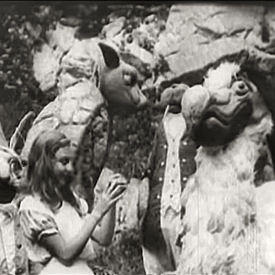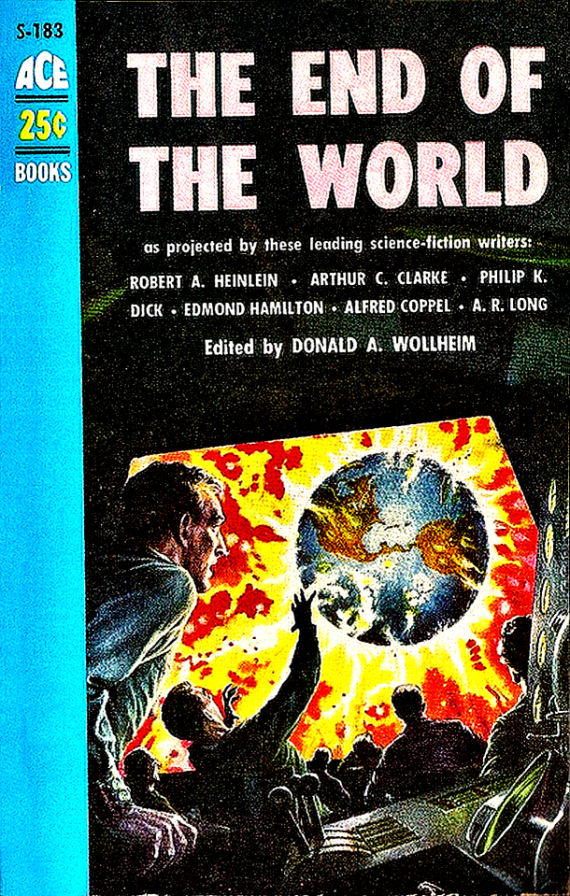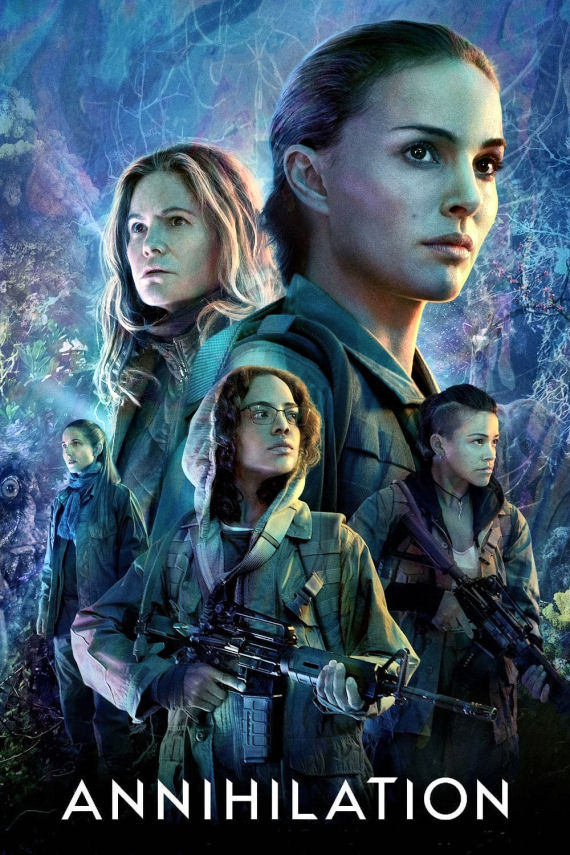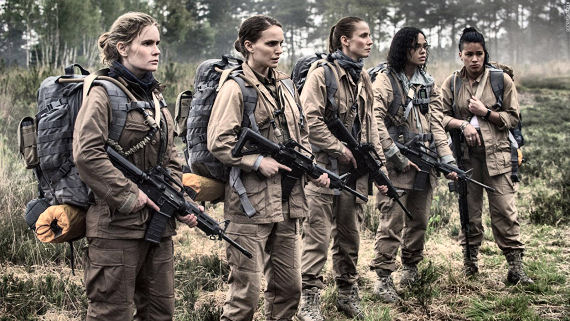
It’s amazing what you can find on the internet. For those of you who remember Murray Leinster’s story, “A Logic Named Joe,” we just about have the equivalent of the network of “Logics” described in the story—the only difference is that Alexa or Siri won’t tell you how to paint peas with shoe polish to kill your significant other without detection. (But who knows, maybe on the Dark Web? I don’t know how to get to it, so I can’t tell you if there’s a Dark version of Joe.)
Anyway, film buffs, I found a 1915 film version of Lewis Carroll’s 1865 book Alice in Wonderland (actual title was Alice’s Adventures in Wonderland, but everyone knows the shortened title), which is the earliest version I’ve seen so far. There’s a fair amount of information about how this version was made and released, etc., on the YouTube page where I found it (here); this version even appears to have Elmo Lincoln in it somewhere.
I think that, without Alice, there might not have been a Wizard of Oz; at least, they both fit in the category of dreamlike children’s books. And you might be aware that the Wizard—the 1939 cinematic one—is one of my two favourite movies of all time.
As you are probably aware, there have been many attempts to put Carroll’s vision on the big and small screen, some more successful than others (another great version is the 1933 version with W.C. Fields as Humpty Dumpty). I think this one—while not including both books—the original book had two sections: Down the Rabbit Hole and Through The Looking-Glass—is still the longest from that era. It originally was a two-hour movie, but sections of it have been lost; this version is a bit over an hour long. I’ve been a fan of the books since early childhood; my mother was Australian, and therefore we were exposed to more English literature than many American kids. And the costumes in this version are taken from the John Tenniel illustrations that I grew up with. So if you’re an Alice-lover, take a look on YouTube.

**WARNING: The following review contains some spoilers, as it’s nearly impossible to do a good review of this movie without ’em. I will review this movie without giving away the ending, however!
I’ve always been a fan of “End of the world” science fiction. In fact, one of my favourite paperbacks, way back in the late ‘50s (I was very young), was The End of the World, an anthology edited by Donald Wollheim (Figure 2). This book contained at least two stories that are timeless classics: one was Robert A. Heinlein’s “Year of the Jackpot”; Philip K. Dick’s “Impostor”—which was made into a fair-to-middlin’ movie with Gary Sinise; and an Alfred Coppel story I liked a lot called “Last Night of Summer.” (Plus a couple of others, including an Arthur C. Clarke story that has been anthologized a lot, “Rescue Party.”) I may still have that book, somewhere in the basement.
But to continue, the movie I’m going to review, Annihilation, is another EOW movie. It’s not just another run-of-the-mill “sci-fi” movie, so this review will entail giving away quite a few—if not all—plot points. So if you haven’t seen it, and/or don’t want to read spoilers, please put this review aside until you have.

Annihilation is directed and written for the screen by Alex Garland (Elysium, Ex Machina), and was taken from the novel by Jeff VanderMeer, which I haven’t yet read.
If you watch the trailer for this movie, you will probably think it’s an action/adventure SF movie. I did, and I was pleasantly surprised that it’s not really so, even though there is some action in it. The movie stars Natalie Portman as Lena, Jennifer Jason Leigh as Dr. Ventress, Benedict Wong as Lomax, David Gyasi as Daniel, Oscar Isaac as Kane, Gina Rodriguez as (Anya) Thorenson, Tuva Novotny as (Cass) Sheppard, and Tessa Thompson as (Josie) Radek. (The movie mostly refers to the women by their last names, so I’ve put their first names in parentheses—except Lena and Kane. I can’t recall hearing their last name at all.
Here’s the setup: a meteorite has crashed into the base of a lighthouse, in Blackwater National Park, Maryland. Shortly after it landed, a phenomenon called “the Shimmer” began (because of its look) and, as the Shimmer (Figure 4) began to grow, encompassing more and more land, people were evacuated. Strange things were happening inside the Shimmer; and both drones and survey teams sent inside did not come back.

The movie opens with Lena (Portman) sitting on a chair in a room with a glass wall, and what looks like more than a dozen people watching from behind that wall. She (Lena) is being interrogated by Wong, who is wearing a white hazmat suit. There are scratches on Lena’s face and, though she is wearing a clean white surgical outfit, she looks a bit worse for wear.
We find out, as Lena narrates her time inside the Shimmer, that she went in to find out what had happened to her husband, Kane, who was part of an Army team that was the last in; he was the only survivor. He had somehow come out unobserved and made his way home; he suffered an attack and was now in a coma. Lena was in the ambulance taking Kane to the hospital, and they were forced off the road by an armed group of presumed soldiers; Lena was drugged and knew no more until she woke in a room at “Area X” (we only know that because the screen announced it). There she met Dr. Ventress (Leigh), who was a psychologist, who was taking a team of female scientists into the Shimmer—Ventress had been in charge of team selection for previous teams during the three years that the government (presumably) had been investigating it.

People were evacuated from the area under the false premise of some kind of chemical spill, and the whole thing was kept secret. Ventress’s mission statement was to reach the center of the Shimmer (the lighthouse), gather data, and return. And, we assume, possibly find out what the Shimmer was and stop it—because, like a cancer, it was growing and could eventually swallow the whole world (there’s your EOW scenario).
Lena herself is a biologist; she teaches medical students at Johns Hopkins about cancer (“during the course of this semester,” she says, “we’ll learn about cancer cells and other autophagic behaviour”). Autophagic, of course, means “self-consuming,” and it’s a process where a cell is broken down and its components used in new cell formation. Hmm. Foreshadowing?
We find out that Lena had given her husband up as dead after about six months, but she now has an opportunity and a motive to join Dr. Ventress’s expedition into the Shimmer, because the army won’t let her go home, and because she can now possibly help him. We learn (after a while) that Dr. Ventress herself has cancer and is dying; the group aside from Lena and Ventress comprises an anthropologist, a surveyor, and a linguist. Lena herself was a soldier for seven years in the past, but none of the others were; the fact that this group is all women, one surmises, is that all the others were overwhelmingly soldiers (and thus, male).

A couple of things to note here, that you might miss if you’re not watching for them: When Lena and Kane are talking after he returns home (Figure 5), their fingers are refracted in the glass on the table; and when Lena visits the comatose Kane in his oxygen tent at Area X (which we quickly find out is just outside the Shimmer), the tent refracts our view in a very similar way to the Shimmer’s edge which, unlike Figure 4 (a still photo) is always moving, with a sound like thunder. (Inside the Shimmer—Figure 6—the air is not refractory or moving.) These two things are key to the Shimmer, which—according to our biologist—is like a prism, refracting air, radio waves, and DNA.
There are a number of very science-fictional references here; Dr. Ventress’s name is from a central character in J.G. Ballard’s The Crystal World and, indeed, later in this movie Lena encounters some beautifully crystallized trees and marsh grasses. The team meets some local wildlife (some of which you see in the trailer)—including an alligator, a bear, a couple of unearthly white deer—and some anthropomorphic trees or bushes. All of which appear to have DNA they shouldn’t; the idea that DNA can be “refracted”—shared between animals or animals and plants, contrary to every scientific principle we know—is a very interesting and advanced theory.
Whatever the motivations of the other team members, we know Lena’s and Dr. Ventress’s—and, as the team begins to be winnowed by the environment, we learn some backgrounds and motivations of the other team members—mostly Anya’s. There is a scene here, very reminiscent of the Kurt Russell movie The Thing, where one of the team—suspicious of the other team members—holds them at gunpoint and tied to chairs, showing that the writer/director is familiar with many SF movie tropes as well as literary ones.
I can tell you, without giving away too much, that the team—or who’s left of it (that’s not a spoiler; we already divined that the team would probably fall apart and that some would die)—does reach the lighthouse. Data is gathered, things are learned. There is a resolution—but possibly not a complete one. Whether you find the ending satisfactory probably depends on how you view the ending; some people think things are wound up properly, while some think the ending is up in the air. I think the latter, and I believe it’s deliberate.
Visually, this film is amazing, or has at least some amazing visuals: from the initial meteor strike to the outside of the Shimmer, to the crystal trees and the mutated deer with floral branches instead of antlers; the mutated and colourful fungus on many tree trunks, and the aforementioned anthropomorphic trees, which reminded me of Richard Powers’s covers on old Ballantine books.
Intellectually, overall, the movie satisfied me; it fulfilled my need for a real SF (rather than a trashy “sci-fi”) epic with thought given to the contents rather than mostly to the visuals and CGI. However, that’s not to say that this doesn’t have the standard “Let’s act like idiots so the plot can advance” moments. Sure, Lena’s the only one with military experience, but she could have told Ventress that if your team is on a watchtower for the night, the person keeping watch should not be on the ground or, indeed, staring into a lighted computer panel (not great for the night vision). Those are two extremely stupid moments.
Also, some of the penultimate information, shown in the lighthouse, is a bit too woo-woo and non-scientific-looking to me, smacking of the previously-stated “let’s throw in some CGI because it would look great!” instead of thoughtful SF. I can’t be too specific here, but if you see it, you’ll understand what I’m talking about.
Oh, and just as lagniappe, you get to hear Crosby, Stills & Nash’s “Helplessly Hoping” a couple of times. Ah, the good old days! I’m a giant CS&N fan, myself.
Did I like the film? Yes, in fact, I liked it very much. With a little less attention paid to the CGI in the lighthouse—although I think maybe some of it was in order to make the film’s ending a bit more speculative or indeterminate, like the interminable “psychedelic” parts of 2001—it could have been that rare “perfect” SF movie. I give it four-minus (which is better than three-plus) flibbets out of five! ¤¤¤¤-
I like comments on my column. You can comment here, or on my Facebook page, or in the several Facebook groups where I link to this. All your comments are welcome! (And don’t feel you have to agree with me to post a comment, either.) My opinion is, as always, my own, and doesn’t necessarily reflect the views of Amazing Stories or its owners, editors, publishers or other columnists. See you next week!











I loves the film, especially the ending in the lighthouse (although i can see why others wouldn’t).
Worth noting that it’s not just Ventress who shares a name from The Crystal World; Radek and Thorensen also borrow their names.
Very analytical review. Hope to see the movie soon, as wgen it comes to satellite tv.